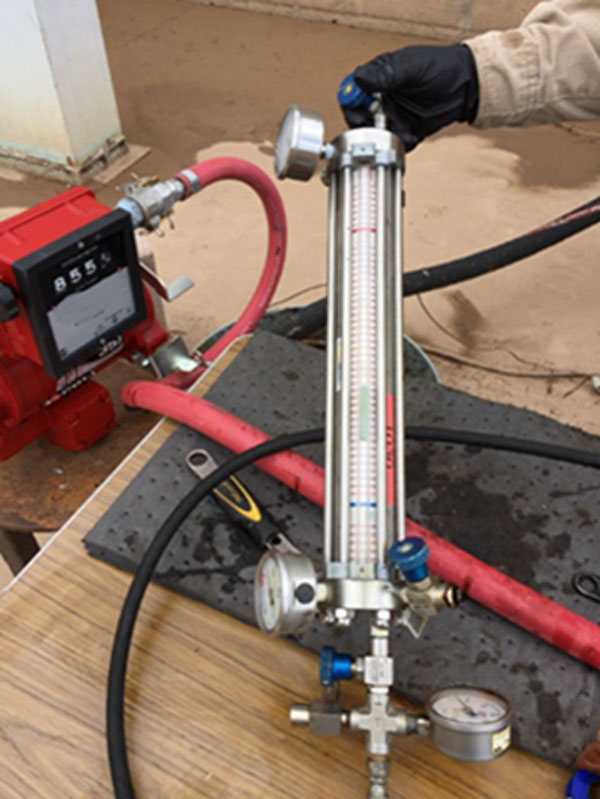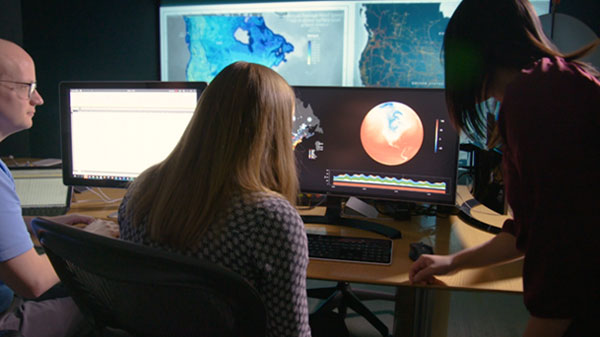
First sCO2 loop integrated with concentrated solar power generation
Sandia achieved the first on-sun heat transfer from falling particles to a supercritical carbon dioxide heat-exchanger system at design pressures and temperatures. Particles were heated to 800 C using concentrated sunlight at the National Solar Thermal Test Facility. The heat was then transferred through a primary heat exchanger to the working liquid supercritical CO2. The heat exchanger is the world’s first to transfer heat from particles in a moving packed bed to supercritical CO2 at design temperatures and pressures greater than 700 C and 20 megapascals pressure. (8000)
Deployable wind turbine analysis
In 2009, Air Force Gen. Charles Wald called for reducing fuel reliance by U.S. armed forces, saying, “The biggest game changer for reducing casualties is reduction in convoys.” In 2020 the Sandia-led Defense Deployable Disaster Wind Turbine Team completed a detailed analysis for DOE that found that wind turbines could reduce the operating time of diesel generators at bases by more than 80%. (8000)

Strategic Petroleum Reserve filled successfully
In response to a presidential directive to fill the U.S. Strategic Petroleum Reserve, Sandia led rapid development, integration and documentation of an oil quality characterization program. The assessment provided specific, actionable recommendations to DOE on maximizing inbound crude oil compatibility with current SPR inventory and maintaining operating requirements for both near-term oil volatility upon return to customers and long-term integrity of the reserve. The effort was key to the success of DOE’s crude oil exchange-for-fill program that supported the U.S. energy sector during the pandemic-related economic downturn. (1000, 8000)
Nuclear fuel cycle knowledge management pilot
Sandia’s Nuclear Energy Fuel Cycle program, in collaboration with the DOE Office of Nuclear Energy, piloted a groundbreaking knowledge capture project, collecting and cataloging tacit knowledge from experts across the field of nuclear waste management. Experts shared their experience with Sandia staff in a series of workshops addressing a variety of critical topics. This extremely valuable information, in the form of searchable videos, presentations and reference resources, is now available to inform future generations as they support the nation in resolving its nuclear waste challenges. (8000)

Jacqueline Chen
Jacqueline Chen, Sandia senior scientist, was selected as a Distinguished Scientist Fellow by DOE’s Office of Science, one of only eight people to hold that honor. The award recognizes her pioneering studies of turbulence-chemistry interactions in combustion, using direct numerical simulation of the turbulent motion, which has helped advance the design of automotive, gas turbine and jet engines. As a fellow, she will expand connections to university partners as she develops new exascale computational methods that incorporate physics-informed machine learning for even larger-scale high-fidelity combustion investigations. (8000)

North American Energy Resilience Model
Sandia developed resilience metrics for the North American Energy Resilience Model and completed “Resilience Metrics for Informing Decisions Associated with the Planning and Operation of the North American Energy System: Technical Report.” Recent widespread power outages caused by extreme events such as hurricane Katrina and superstorm Sandy have made the ability to accurately model the electricity grid and associated interdependencies a high priority. The development of NAERM is the highest-priority goal for the DOE’s Office of Electricity. (1000, 5000, 8000)